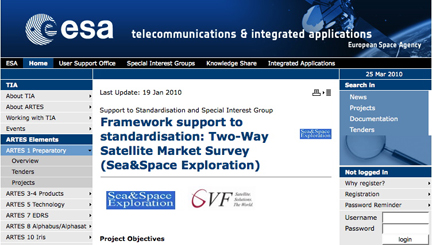Approximately 40 leading market actors, including the major product manufacturers and satellite service providers worldwide, contributed to the survey. Made on behalf of the European Space Agency (ESA), the objectives of the survey included the following key parameters:
- To make an independent commercial assessment of key two-way satellite broadband products
- To characterize the main user segments
- To identify service operators' requirements for new product features
- To identify which areas of development will improve the business globally
Product design has to be optimized in order to cope with a variety of end-user requirements and applications. There is a consensus among operators regarding the need for flexible and auto-adaptive coding schemes and modulations (ACM) in both forward and return links. Higher modulation schemes (> 64APSK) with good resilience to link distortion are requested. More efficient access schemes are also in demand, as well as simultaneous support of bursty and regular traffic. When very small antennas are required by the user application (e.g., aeronautical, SCADA, etc.), the use of spread spectrum techniques are recommended.
In varying degrees, product manufacturers have already begun implementing some or all of these features (e.g., ACM) in the forward link. However, in the return link only a few manufacturers offer some of these features and most of them have still to implement a full dynamically adaptive solution. Most of the potential future technical developments relate therefore to the improvement of the return link. In the frame of the study, a unique tool is also called for, allowing operators to model any existing or new satellite network, simultaneously taking into account service profiles, satellite and product characteristics, costs and market aspects. More information on the report can be found on the ESA Telecom web site: http://telecom.esa.int/telecom/www/object/index.cfm?fobjectid=29675#2


